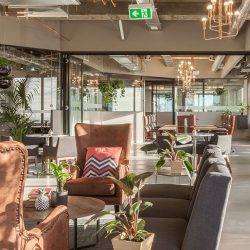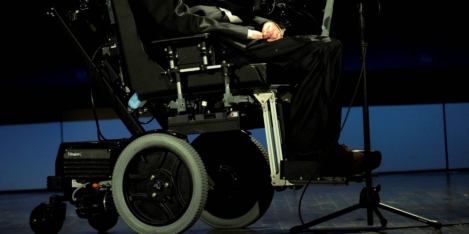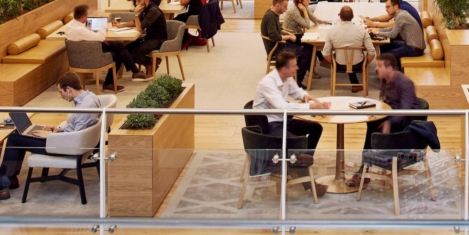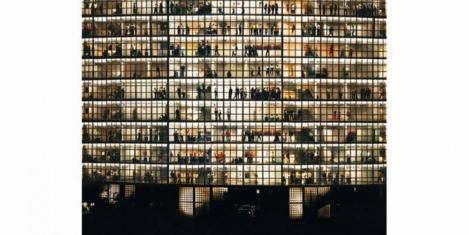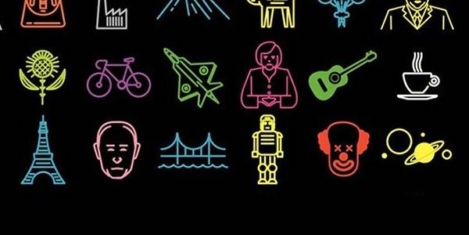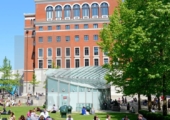April 6, 2018
March 23, 2018
Seven workplace stories that fired up our synapses this week
by Mark Eltringham • Features, Flexible working, Property, Technology, Workplace design
March 16, 2018
Seven of the best stories about life, the universe and everything we’ve seen over the past week
by Mark Eltringham • Features, Technology, Wellbeing, Workplace design
 People don’t actually know themselves very well
People don’t actually know themselves very well
Some actual facts about the time we spend sitting at work
German workers: satisfied, but not engaged
What skills and behaviours make a good leader effective?
Stephen Hawking’s most dire predictions for the future
The World’s happiest nations, according to the UN
A critique of the dogma of wellbeing
Image: By NASA/Paul Alers [Public domain], via Wikimedia Commons
March 13, 2018
Workplace Matters Podcast: Neil Usher on the elemental workplace and a possible new era for BIFM
by Mark Eltringham • Facilities management, Features, Premium Content, Workplace design
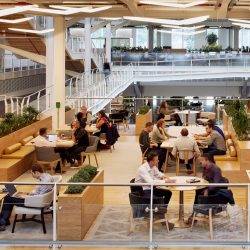 Workplace author, blogger and consultant Neil Usher joins 3edges director Ian Ellison again on the day of his ‘The Elemental Workplace’ book launch; also the day the British Institute of Facilities Management (BIFM) announce their proposal to become the Institute of Workplace and Facilities Management (IWFM). Both of these very different, but exciting developments for the workplace discipline are discussed at length, and Neil offers insightful critique as always. The conversation ends up at one of the new frontiers for the way we work and the places we do it – and global society in general – the ethical challenges we face from emerging digital technologies. Further links from the discussion can be found in the show-notes on the podcast page of www.3edges.co.uk, where you can also find a free download of the Workplace Leadership Manifesto which 3edges co-wrote and published with Neil this January.
Workplace author, blogger and consultant Neil Usher joins 3edges director Ian Ellison again on the day of his ‘The Elemental Workplace’ book launch; also the day the British Institute of Facilities Management (BIFM) announce their proposal to become the Institute of Workplace and Facilities Management (IWFM). Both of these very different, but exciting developments for the workplace discipline are discussed at length, and Neil offers insightful critique as always. The conversation ends up at one of the new frontiers for the way we work and the places we do it – and global society in general – the ethical challenges we face from emerging digital technologies. Further links from the discussion can be found in the show-notes on the podcast page of www.3edges.co.uk, where you can also find a free download of the Workplace Leadership Manifesto which 3edges co-wrote and published with Neil this January.
March 9, 2018
Seven great workplace stories that have inspired and intrigued us over the past week
by Mark Eltringham • Facilities management, Features, Property, Technology, Workplace design
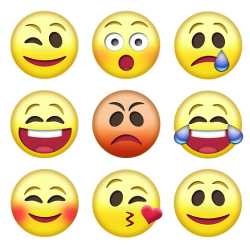 Do people really get promoted to their level of incompetence?
Do people really get promoted to their level of incompetence?
Emotional Intelligence: an integrative meta-analysis
Male and female bosses share the same “masculine” personality traits
How to read less news but be more informed
The Jurassic Park problem – tech and ethics
The 911 transcripts of times Apple employees walked into glass walls
Landlords woo office tenants with worker perks
March 2, 2018
Seven workplace stories that made us think this week
by Mark Eltringham • Features, Flexible working, Property, Technology, Wellbeing, Workplace design
 IBM gives services staff until 2019 to get agile
IBM gives services staff until 2019 to get agile
White collar workers are fleeing their desks to craft a life
The future of real estate tech and how we got here
McMindfulness: Buddhism as sold to you by neoliberals
Why our jobs matter more now than ever before
A psychologist noticed this cool chair illusion in his workplace
How to think about artificial intelligence in real estate
February 16, 2018
Seven workplace related stories that have inspired us this week
by Mark Eltringham • Features
 There is no such thing as a smart city
There is no such thing as a smart city
The radical idea of a world without jobs
The next stop in AI is augmenting humans
New technology to reduce the amount of sleep we need
Strengths based cultures and the future of work
Like coffee, great ideas take time to percolate (registration)
The myth of Apple’s great design
February 9, 2018
Seven workplace stories that have defined our week
by Mark Eltringham • Features
 How we developed our theories of colour through medieval glass
How we developed our theories of colour through medieval glass
How smartphone addiction kills manners and moods
How the modern world makes us mentally ill
A first look inside Apple Park
The trivial problem of paper jams and the limits of technology
Are innovative companies more profitable?
Companies are not getting what they want from their workplaces
February 2, 2018
Seven workplace stories that got us thinking this week
by Mark Eltringham • Facilities management, Features, Technology, Workplace, Workplace design
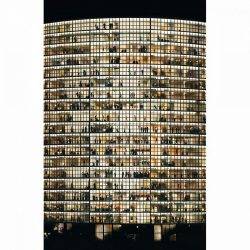 Is lack of sleep affecting your work?
Is lack of sleep affecting your work?
What if you never saw your colleagues again?
In the name of place-making, architects are often complicit in social cleansing
What CIOs need to know about workplace biometrics
Embarrassment capes and singing drones aim to shame Japan’s workaholics
Together or apart: solidarities, silos and seating plans
Andreas Gursky, master of the contemporary sublime
Image: Andreas Gursky’s May Day V
January 26, 2018
Seven workplace stories that made us stop and think this week
by Mark Eltringham • Features
 Americans see both good and bad in trends that are changing the workplace
Americans see both good and bad in trends that are changing the workplace
Seven portraits of modern work in the UK
Podcast: It’s time we accepted that the workplace is not a playground
Film: The world in 2018 (registration needed)
Health experts recommend standing up at desk, leaving office, never coming back
Delivering business growth through diversity
January 19, 2018
Seven of the best workplace stories from the last week (or so)
by Mark Eltringham • Facilities management, Features, Property, Technology, Workplace, Workplace design
 The radical idea of a world without jobs
The radical idea of a world without jobs
What AI can and can’t do (yet) for your business
WeWork harms 40 percent of coworking spaces in its vicinity
No blind spots in leopards’ eyes: five hopes for Workplace in 2018
Women and men in STEM at odds over workplace equity
Economists grapple with the future of the labour market
Forget Blockchain and Bitcoin, AI is where you should be focussing
January 12, 2018
The seven must-reads that were on our radar this week
by Mark Eltringham • AI, Features, Flexible working, Property, Technology, Workplace
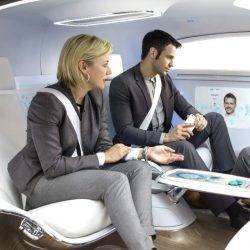 What to do when you’re feeling distracted at work
What to do when you’re feeling distracted at work
The essential truths of management books distilled to 25 words
The past and present future of corporate real estate
A new approach to the design of work
How to tackle impostor syndrome in 2018
Managing an integrated government estate: lessons from the UK
Autonomous car hype is way ahead of reality









